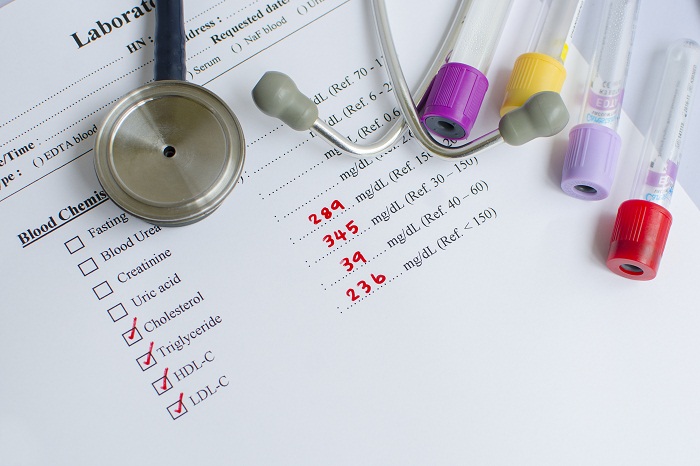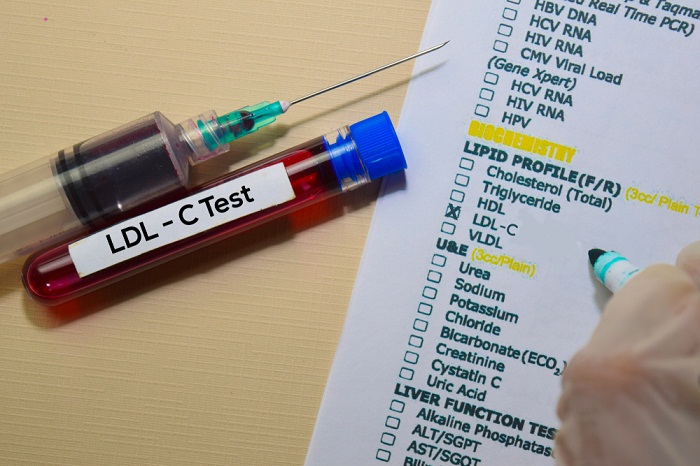News& Information
-
Medical Trends
 Home -> News& Information -> Medical Trends
Home -> News& Information -> Medical Trends
Talk about High Blood Lipids
Today, more and more people live a hectic lifestyle and are under high work pressure. Staying up late and working overtime has become the new normal.
Many people's diets may be based mainly on takeaway food, and there may not be time to pay that much attention to healthy lifestyles.
Over time, the body's metabolic problems can gradually lead to abnormal blood lipids.
Recently Inclisiran lipid-lowering injection, known as the "blood lipid vaccine," was approved for marketing in China, bringing new hope for blood lipid management to countless hyperlipidemic patients.

What is hyperlipidemia?
Hyperlipidemia refers to excessively high blood lipid levels in the human body, which can lead to atherosclerosis, coronary artery disease, pancreatitis, and other diseases that seriously endanger health.
The presence of hyperlipidemia in some people is related to bad lifestyles, such as a diet high in fat and sugar, excessive alcohol consumption, obesity, etc.
Others are related to other diseases or medications, such as diabetes and nephrotic syndrome, hypothyroidism, and polycystic disease, ovarian disease, use of diuretics, glucocorticoids, etc. humans have congenital hyperlipidemia, which is mainly caused by gene mutations and is associated with apparent genetic predisposition and familial aggregation. Clinically, this is often called familial hyperlipidemia.
What indicators should we pay attention to in blood lipid testing?
Total cholesterol (TC), triglyceride (TG), low density lipoprotein cholesterol (LDL - C) and high-density lipoprotein cholesterol (HDL - C) are the main items for blood lipids testing in clinical practice. LDL - C is considered to be the main risk factor of atherosclerosis, and is also the key target index in the monitoring and management of hyperlipidemia.

What methods are there to regulate blood lipids?
1、Diet and lifestyle
Changing the diet and improving lifestyle are basic measures in the treatment of dyslipidemia.
2、Oral lipid-lowering drugs
A variety of cholesterol-lowering drugs are used in clinic. Statins(eg, Atorvastatin, Rosuvastatin )are the main lipid-lowering drugs usually as the first choice if there is no contraindication. Patients with obvious elevated TG may given fibrates (e.g. Fenofibrate) for therapy. LDL - C absorption inhibitors (e.g. Ezetimibe) usually be combining used with statin if LDL – C is not reach the required target.
Under normal circumstances, oral lipid-lowering drugs should be taken daily according to the dose prescribed by the doctor.
3、Injection of lipid-lowering drugs
For people with homozygous familial hypercholesterolemia, PCSK9 monoclonal antibody (Eluizumab injection) is recommended.
Subcutaneous injections are usually needed every two weeks.
4、 Inclisiran
Inclisiran is a new siRNA technology injection drug developed by Novartis.
It is a long-acting siRNA drug used to reduce LDL cholesterol by inhibiting PCSK9 (protein convertase subtilisin) mRNA transcription.
The goal is the level of the low-density lipoprotein receptor (LDLR) on the surface of the liver cells and achieving a plasma LDL-cholesterol-lowering effect.
Two subcutaneous injections of Inksilan per year can lower LDL cholesterol levels stably and in the long term by more than 50%. It has very good long-term efficacy and safety.

Who is Inclisiran suitable for?
1. For patients with high cholesterol.
Inclisiran is suitable for patients whose cholesterol remains at a persistently high level, especially those whose LDL cholesterol level is too high.
After injection, it can effectively lower LDL cholesterol levels, control them in the ideal range, and reduce the risk of heart attack and stroke.
2. Patients who are not suitable for statin therapy.
Currently, statins are the most common lipid-lowering drugs, but for patients who cannot tolerate statins or whose blood lipids still do not reach the ideal LDL-cholesterol target after receiving the maximum dose, Inclisiran can be an effective alternative treatment.
Finally, there are patients with low compliance.
Lipid-lowering drugs must be used for a long time, but many patients often forget to take them.
Therefore, it is easier and faster for patients with low compliance to inject Inclisiran.
How is Inclisiran used?
Inclisiran injection can be given subcutaneously in the abdomen upper arm or thigh.
For most patients, a booster injection can be given three months after the first injection, after which two injections a year can effectively lower LDL cholesterol levels and effectively control blood lipids.




